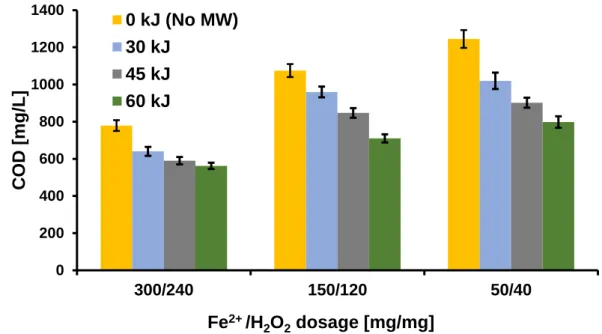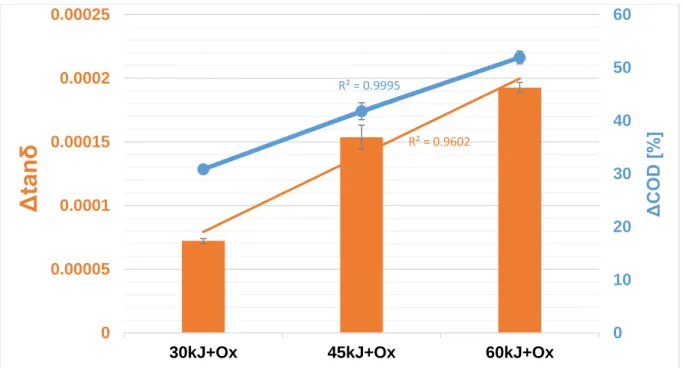PROCEEDINGS OF THE
26 th International Symposium
on Analytical and Environmental Problems
Szeged, Hungary November 23-24, 2020
University of Szeged
2
Edited by:
Tünde Alapi Róbert Berkecz
István Ilisz
Publisher:
University of Szeged, H-6720 Szeged, Dugonics tér 13, Hungary
ISBN 978-963-306-771-0
2020.
Szeged, Hungary
3
The 26
thInternational Symposium on Analytical and Environmental Problems
Organized by:
SZAB Kémiai Szakbizottság Analitikai és Környezetvédelmi Munkabizottsága
Supporting Organizations
Institute of Pharmaceutical Analysis, University of Szeged
Department of Inorganic and Analytical Chemistry, University of Szeged
Symposium Chairman:
István Ilisz, DSc
Honorary Chairman:
Zoltán Galbács, PhD
Organizing Committee:
István Ilisz, DSc professor of chemistry
University of Szeged, Institute of Pharmaceutical Analysis Tünde Alapi, PhD
assistant professor
University of Szeged, Department of Inorganic and Analytical Chemistry Róbert Berkecz, PhD
assistant professor
University of Szeged, Institute of Pharmaceutical Analysis
Scientific Committee:
István Ilisz, DSc Tünde Alapi, PhD Róbert Berkecz, PhD Daniela Sojic Merkulov, PhD
associate professor
University of Novi Sad, Faculty of Sciences, Department of Chemistry, Biochemistry and Environmental Protection
173
APPLICATION OF MICROWAVE-ASSISTED FENTON-REACTION FOR ENHANCED ORGANIC MATTER REMOVAL IN WASTEWATER TREATMENT
Zoltán Jákói1, Laura Haranghy1, Cecilia Hodúr1, Sándor Beszédes1
1Department of Process Engineering, University of Szeged, H-6725 Szeged, Moszkvai krt. 9, Hungary
e-mail: jakoiz@mk.u-szeged.hu
Abstract
In our experimental work we focused on the applicability of a novel alternative in wastewater management, i.e. the application of microwave-irradiation assisted Fenton-like process. We wanted to investigate whether the combination of microwave treatment with Fenton’s reaction can enhance the organic matter removal in meat industry originated wastewater compared to the standalone oxidative reaction, and if so, to what extent. In our study we also wanted to explore the possibility of using dielectric measurements to determine the change in organic matter content, i.e. to see if there is a connection between the change in COD (chemical oxygen demand) and the dielectric loss tangent (tanδ).
Introduction
Wastewater is produced in larger and larger extent during industrial practice, and contains different – often toxic – organic and inorganic compounds, therefore the proper treatment of it is a necessity before entering into the sewer system or discharge to natural reservoir. Since the composition and quality characteristics of different types of wastewater can vary and is usually challenging to predict, the development of a universal and effective treatment technology would be the most favorable.
Several studies have already shown that advanced wastewater treatment technologies can significantly increase the efficiency of organic matter removal in wastewater samples compared to the conventional technologies [1]. Advanced oxidation processes (AOPs) are a group of these innovative technologies, which standalone Fenton’s reaction and the combination of Fenton’s reaction and other types of treatments belong to. It has been shown that Fenton and Fenton-like processes can be effectively used in wastewater treatment; since they can significantly reduce the organic content of different types of wastewater, especially in certain combinations (e.g.
photo-Fenton or electro-Fenton) [2]. One of the biggest advantages of using Fenton processes is that they can be implemented at ambient temperature and atmospheric pressure, however certain limiting factors are presented as well and should be considered (pH, temperature for instance).
Commonly the main drawback of the application of Fenton reaction is the need for long reaction time. Among the available methods to shorten the time demand of a given process, microwave irradiation has been more and more widely used and investigated. Microwave-assisted Fenton- processes are still quite novel technologies in water and wastewater treatment, however the available preliminary results from different studies are quite promising [3]. In our study we wanted to investigate the effects of microwave-irradiation on the efficiency of Fenton’s reaction in the organic matter removal of meat industry wastewater by measuring the COD after the different treatments. Dielectric parameters were also measured to investigate the applicability of dielectric measurements for detection of organic matter removal.
Experimental
For the experiments, meat industry wastewater (MIW) samples were used in a final volume of 100 cm3. The main characteristics of MIW are presented in Table 1.
174
Parameter Unit Value
COD (chem. ox. demand) [mg/L] 1612±45
TOC (total organic carbon) [mg/L] 179 ± 16
TS (total solid) [w%] 2.1 ± 0.11
pH [-] 6.7 ± 0.2
Table 1. Main characteristics of MIW
Fenton’s and microwave-assisted Fenton’s reaction were carried out with different Fe2+/H2O2
ratio in order to determine which reagent dosage is the optimal for organic matter removal (i.e.
COD decrease) as follows: 300/240 mg/mg, 150/120 mg/mg and 50/40 mg/mg. pH was set at 3.0 before applying the reagents. Each Fenton’s reaction were occurring for 2 hours, the reaction was stopped by adding catalase enzyme to the samples in a volume of 400 μl.
Microwave treatments were performed as pre-treatments, i.e. before the Fenton’s reaction had occurred. The microwave treatments were carried out in a Labotron 500 laboratory microwave equipment with a magnetron operating at 2450 MHz frequency. The total irradiated energy were varied between 30, 45, 60 and 75 kJ at each experiment. Dielectric measurements were performed with a DAK-3.5 (SPEAG) dielectric probe connected to a ZVL3 (Rhode&Schwartz) type VNA (vector network analyzer) in a frequency range of 200-2400 MHz.
Results and discussion
In the first series of the experiments we investigated the effect of total irradiated microwave energy on the effectiveness of Fenton’s reaction in regards of COD. It can be seen that standalone Fenton’s reaction (with no MW) was able to reduce the initial COD (1612 mg/L) of the samples by 20-51%, depending on the concentration of the reagents – using 300/240 mg/mg Fe2+/H2O2 dosage resulted in the biggest change in COD (Figure 1).
Figure 1. COD change in the function of dosage and total MW energy
The intensification effect of microwave irradiation on Fenton’s reaction also depended on the Fe2+/H2O2 ratio. It can be concluded that the change of microwave energy intensity has stronger effects at lower reagent-dosage ratios, than that of obtained for higher concentrations. It can be seen that with the combination of MW irradiation during the Fenton process, the absolute need for reagents can be reduced – by applying 60 kJ total irradiated energy with a dosage of 50/40
0 200 400 600 800 1000 1200 1400
300/240 150/120 50/40
COD [mg/L]
Fe2+ /H2O2dosage [mg/mg]
0 kJ (No MW) 30 kJ
45 kJ 60 kJ
175
mg/mg, almost the same COD level could be obtained as with standalone Fenton’s reaction with a dosage ratio of 300/240 mg/mg (cf. 798 – 779 mg/L).
In the second half of the experiments we measured the dielectric properties (dielectric constant, dielectric loss factor and dielectric loss tangent) of the differently treated samples to see if any of these constants is applicable to determine the change in COD. Our results verified that there is a strong correlation between the change of dielectric loss tangent (Δtanδ, the ratio of the dielectric constant ε’ and dielectric loss factor ε”) and the change of the final COD (ΔCOD) of the MW/Fenton treated samples, with an R2-value of 0,9602 and 0,9995, respectively.
Regarding the effects of treatment the change of concentration of organic matter and the change of the tanδ shows a similar tendency (Figure 2).
Figure 2. Connection between the change in COD and tanδ (Fe2+/H2O2 ratio was fixed at 150/120 mg).
Conclusion
Our experiments focused on the effects of microwave-assisted Fenton’s reaction on the organic matter removal in meat industry wastewater samples. Based on the results gained, it can be concluded that microwave-irradiation as a pre-treatment method can increase the efficiency of the oxidation process, and the strength of effect is depending on the concentration of reagents being used. At lower dosage ratio, the effect of MW is stronger, and by applying high total irradiated energy (60 kJ), the need for reagents can be reduced by almost 84% compared to the standalone Fenton’s oxidation reaction. Dielectric measurements show that the change in dielectric loss tangent (tanδ) shares a similar tendency with the change in final COD, therefore it is capable of monitoring the changes in organic matter content.
Acknowledgements
The authors are grateful for the financial support provided by the projects EFOP-3.6.2- 16- 2017- 00010 – RING 2017; and National Office for Research, Development and Innovation - NKFIH, K115691.
R² = 0.9602 R² = 0.9995
0 10 20 30 40 50 60
0 0.00005 0.0001 0.00015 0.0002 0.00025
30kJ+Ox 45kJ+Ox 60kJ+Ox
ΔCOD [%]
Δ tan δ
176 References
[1] H. Zhou, D. W. Smith, Advanced technologies in water and wastewater treatment, Journal of Environmental Engineering and Science, 1 (2002) 4.
[2] Min Xu, Changyong Wu, Yuexi Zhou, in: Ciro Bustillo-Lecompte, Advanced Oxidation Processes – Applications, Trends and Prospects, IntechOpen, 2020, pp. 54-72
[3] Y. Yang, P. Wang, S. Shi, Y. Li, Microwave enhanced Fenton-like process for the treatment of high concentration pharmaceutical wastewater, Journal of Hazardous Materials, 168 (2009).

